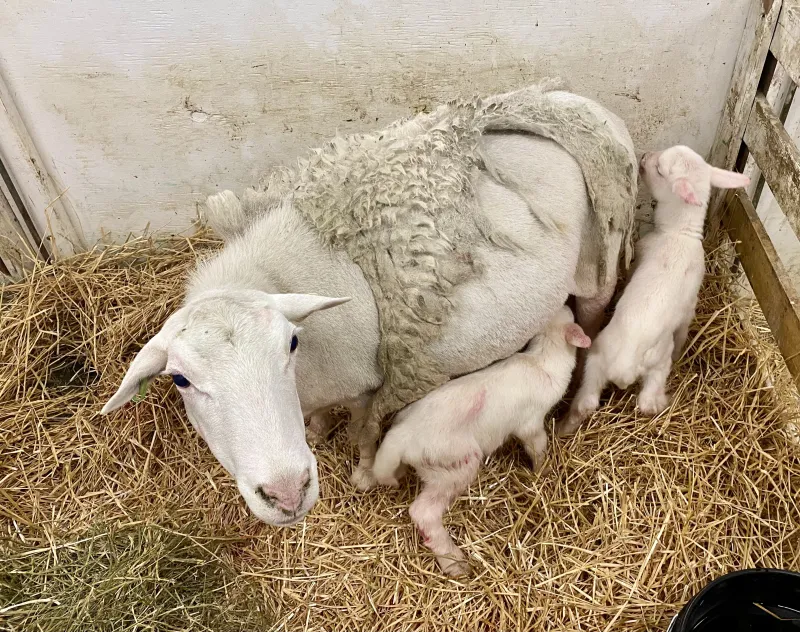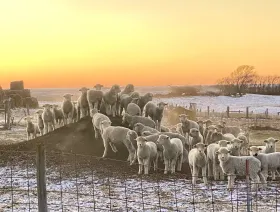Sheep and baby lambs
Producing fall born lambs has several advantages, such as:
- Reduced parasite load
- Availability of high-quality feed (crop residue)
- Seasonal high demand for lamb during March-May marketing.
This management approach is most possible with certain breeds and/or crosses, including Dorset, Polypay or Corriedale.
Ranchers may stretch their resources with effective seasonal marketing for improved yearly income of a sheep venture. Overall, labor and facility utilization, risk mitigation and management play a role in determining if you should pursue fall lambing in your flock.
Calendar
To effectively implement an out-of-season breeding program, not only is the breed of the flock important, but timing is everything. Ewes (and rams) should be analyzed to determine body score in March and early April. A 35-50-day breeding season beginning on April 20 is recommended with rams being removed at the end of this period to separate fall- and spring-lambing groups of ewes.
This should result in lambing season beginning mid-September through October. This allows lambs to be fed throughout the winter and finished for the March-May demand for religious holidays. This complements spring-born lambs via producing two distinct lambing groups to utilize facilities more effectively and accommodate market flexibility.
Flock of sheep
Strategies
- Utilize BCS. On a scale of 1-5 (1, too thin; 5, too obese), managing ewes at a score of 2.5 to 3.5 is optimum for breeding.
- Keep a strict selection program by managing good records. Know which ewes tend to breed out of season and their offspring, and consider culling or moving those that fail to breed for fall lambs to spring lambing.
- Flush your ews with grain. Providing increased energy prior to breeding can increase conception. However, due to seasonality, fall born lambing percent will be 15-20% lower than spring-born ewes.


